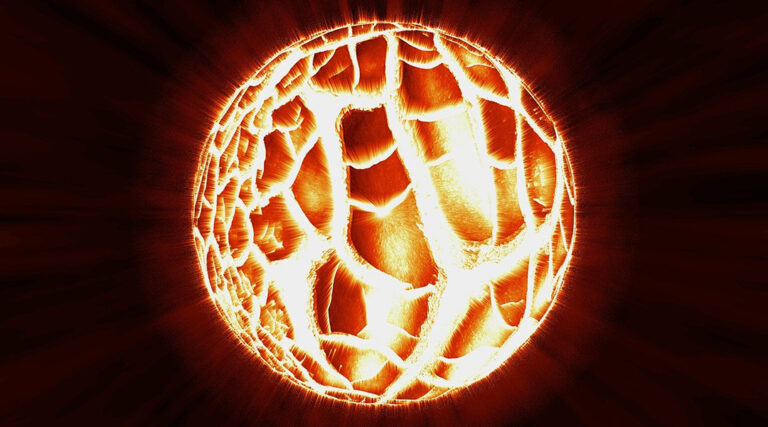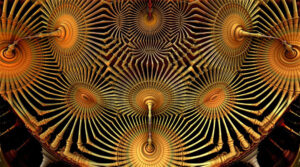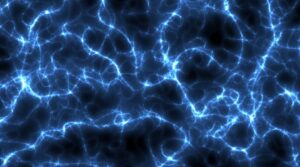Fermions forming pairs? It’s just a matter of getting the conditions right.
Scientists classify all elementary particles into two categories with very different behaviors depending on the value of their spin, which is the quantum analogue of classical rotation. If this quantity measured in certain units is an integer, then the particle is called a boson, and if it’s a half-integer, a fermion.
Fermions include all the elementary particles that make up ordinary matter, such as the electron, proton and neutron, while bosons include the photon, particles mediating weak, strong and gravitational interactions, and the Higgs boson, which gives mass to all elementary particles.
The physics of fermions is such that normally two identical particles of this type (for example, two electrons) prefer to stay away from each other, but in some situations, such as at ultralow temperatures or ultrahigh densities, they tend to form bound pairs instead.
The formation of fermion pairs plays a crucial role in nuclear and neutron star physics and also in superconductivity. The latter phenomenon occurs because paired electrons, known as Cooper pairs, can move through a superconducting material without resistance, unlike individual electrons, which can collide with each other and the crystal lattice, losing their energy, which turns into heat. All this makes it very important to know all the details of this process, but the extreme conditions under which this pair formation occurs make it very difficult to study.
To better understand this phenomenon, a team of American physicists from the MIT-Harvard Center for Ultracold Atoms and Research Laboratory of Electronics at MIT conducted an experiment in which they were able to observe the formation of fermion pairs directly.
At present, it is impossible to study the formation of electron pairs, because these particles are too light and fast to observe the formation of their bound states, so the scientists studied the behavior of much heavier fermions, namely potassium atoms, which of course are not elementary particles, but they have a half-integer spin which makes their behavior in many respect similar to that of electrons.
The team examined a dilute gas of about 1,000 such atoms cooled to nanokelvins, which caused them to move very slowly. In order to hold the atoms together, the researchers used an optical trap, which was a grid of laser beams that prevented them from moving freely, but did not prevent atoms from jumping from one grid cell formed by intersecting perpendicular laser beams to another, which quantum mechanics allows them to do.
In order to understand whether the atoms formed a fermion pair, the team studied the response of the gas to an applied magnetic field, since it is known that fermion pairs respond to this field much more weakly than free electrons.
After making multiple such measurements, the scientists found that many gas atoms did form bound pairs inside the cells of the grid.
“Fermion pairing is at the basis of superconductivity and many phenomena in nuclear physics,” explained Martin Zwierlein, the Thomas A. Frank Professor of Physics at MIT and one of the authors of the study. “But no one had seen this pairing in situ. So it was just breathtaking to then finally see these images onscreen, faithfully.”
Since the experiment required a very high accuracy of measurements and a huge number of these; the authors had to take thousands of snapshots of the atomic cloud using their measurement technique to get the final picture of pair formation. “It was bloody difficult to get to a point where we could actually take these images,” Zwierlein says. “You can imagine at first getting big fat holes in your imaging, your atoms running away, nothing is working. We’ve had terribly complicated problems to solve in the lab through the years, and the students had great stamina, and finally, to be able to see these images was absolutely elating.”
The result obtained by the physicists confirmed the validity of the Hubbard model, which is used to theoretically describe the behavior of fermion pairs. Another discovery that also matched the prediction of this model was the observation of the formation of pairs of atoms located at a sufficiently large distance from each other, that is, not in the same cell.
They also observed another predicted but never observed phenomenon — pairs of fermions tended to settle down not in neighboring cells but diagonally to form a checkerboard pattern.
Although the physicists have worked with potassium atoms at nanokelvin temperatures, and not with electrons, they believe that the picture of fermion pair formation they observed and confirmation of the Hubbard model will allow a better understanding of superconductivity and even achieve it at room temperature in the future.
“If you normalize our gas of atoms to the density of electrons in a metal, we think this pairing behavior should occur far above room temperature,” concluded Zwierlein. “That gives a lot of hope and confidence that such pairing phenomena can in principle occur at elevated temperatures, and there’s no a priori limit to why there shouldn’t be a room-temperature superconductor one day.”
Reference: T. Hartke, B. Oreg, C. Turnbaugh, N. Jia, and M. Zwierlein, “Direct observation of non-local fermion pairing in an attractive Fermi-Hubbard gas,” Science (2023), DOI: 10.1126/science.ade4245.
Feature image credit: ΛΖΞ on Pixabay















+ There are no comments
Add yours